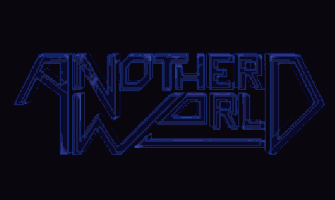
Responsive Controls & Expressive Shapes
web menu by Css3Menu.com
The human impulse to imbue the inanimate with the appearance of life, surely as old as our species, can be seen as the common progenitor of the creation of all visual arts. A ubiquitous incarnation of this impulse can be seen in the appreciation, by all young humans around the world, of the art of puppetry. By being born with the visual apparati to detect facial shapes above almost all else, we endowed almost everything in our visual field to be a small modification away from being a face (refer to image collections of plastic eyeballs adhered to random objects, or “things that look like faces but aren’t”). Carrying the illusion of life beyond the image, we also seem to want to see puppets act out dramatic situations for our entertainment. If the puppeteers are skilled enough, the situation can be simple conversation, as is common with ventriloquism.
The goal-orientation of video games is likely colored by the fact that games are created by computer programmers. Most games don’t prioritize their dramatic context. In fact, much of the action of video game characters requires that that they strictly obey the player’s direction and not surprise them with any evidence of self-motivation. In these moments,
there seems to be little difference between the game character and a cursor. A cursor’s effectiveness is defined by its ability to assist the user in achieving his goals, without superfluous visual distraction that draws attention to itself. In this way, cursors and characters with player-defined goals are best categorized as ‘tools’.
What about a game like tetris, where a piece is the ‘tool’ until it ‘settles’ (a bit after it touches the ground)? Afterward, something which implies animacy/magic on the part of the game world may or may not happen, and the next piece becomes the tool. Why is this seemingly sophisticated situation so intuitive for players to grasp? Perhaps the manipulation of piles of bricks is something that has a clear physical analog, and the downward movement of the piece calls attention to its focus.
It’s useful to consider the ‘tool’ aspect of an on-screen object to be mutually exclusive from its ‘puppet’ aspect. In the tool aspect, there is no intention to convince the audience/player that the character has a life of its own, and it thus it would unnecessarily broaden the definition of a ‘puppet.’”
Game characters are tools that can become puppets temporarily (or puppets that can become tools), as afforded by the goals and constraints of the game world. To the extent that a tool is performing optimally, it is not succeeding as a puppet (or more accurately, ‘not behaving as a puppet’), and vice versa. This is because a tool succeeds by conforming to expectations, and a successful puppet breaks them.
A video game character often moves between these two ideas, consciously or not, determined by the degree to which the character is adhering to the player’s expectation. A game developer might intend to develop a character to be purely a tool (with no apparent self-motivation), but if he fails to meet the player’s expectation, the character is effectively the same thing as a puppet with a bad attitude. Either way, expectations are not met and the surprises are not satisfying. The experience won’t hold anyone’s interest.
The thrill of playing ‘as’ a well-designed game character seems to hinge on the successful balance of finding satisfaction in the character as a tool, as well as being entertained by the character as a puppet. The puppet appeal helps to relieve the “decision fatigue” that tool use can bring about, while the ‘tool’ use of the character helps invigorate the fantasy by confirming the player’s power and influence in the game reality.
Trying to wedge puppet-like animation into tool situations like running and jumping can create too much noise, both visually and cognitively, since the player will see these animation sequences thousands of times. The animation must be tuned to display what could be considered the “average” action across with the gamut of situations the game character will find itself in.
The act of transitioning from tool to puppet and back again is almost always difficult and complex to do, and if the designers don’t take strategic steps to prepare for it, it can be downright impossible.
What facilitates an easy transition between tool and puppet? Generally speaking, it means having the minimum amount of contrast density necessary to communicate unambiguously (and quickly enough for the game’s timing demands). All contrast complexity beyond the minimum presents opportunities for debilitating complications in production and confusing experiences for the end user.

“Life is a tragedy when seen in close-up, but a comedy in long-shot.”
Charlie Chaplin
The excerpt above (taken from Eric Chahi's 1991 one-man masterpiece, "Another World") clearly demonstrates a successful traverse of the tool-puppet spectrum. By virtue of being comprised of simple shapes, the character (which functions acceptably as a navigation tool) bridges seamlessly into the perceptual world of film grammar. The sequence is an ideal showcase of the connections between the psychology of image processing, and the arts of cinematography and film editing.
Chahi demonstrates a grasp of the fundamentals of film editing, cutting on the upward motion of the alien slug creature to the closeup shot. The motion is continued in closeup, and heightened with the engagement of the slug's "fang." The next shot is a model of economy, showing the target of the fang's aggression. The camera then cuts back out to the "tool view," the original side-view from which the game is played, so we can watch (with some bemusement) as the protagonist suffers his fate. The simple design that makes this all happen without ambiguity exemplifies a high "signal-to-noise" ratio: distinct details like Lester's red hair and the odd shape of the slugs help maintain a sense of orientation and preserve the context.